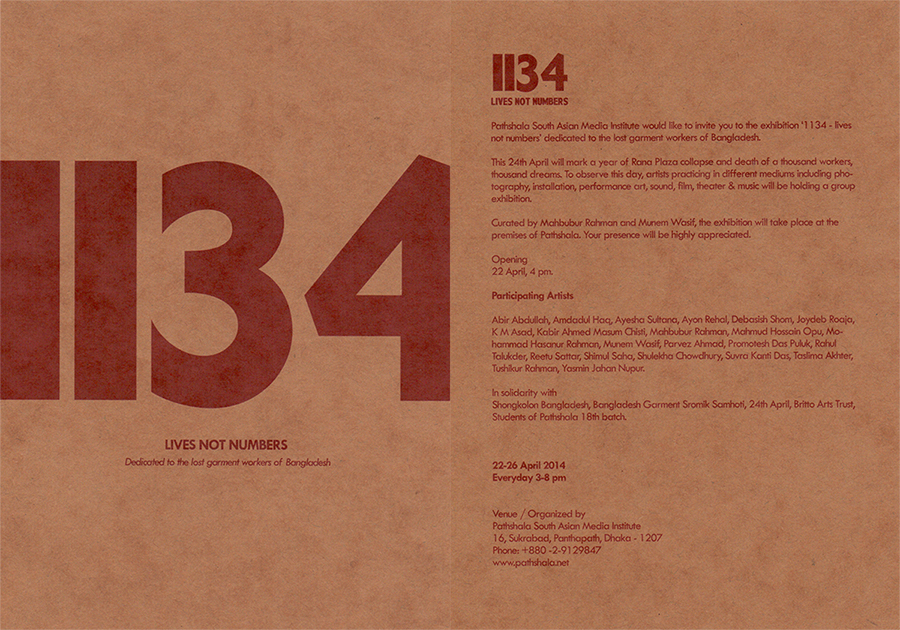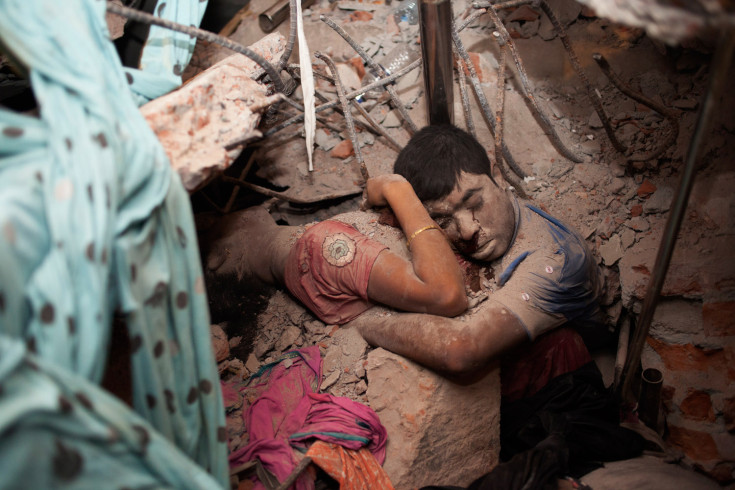Category: Corruption
Government?s self-publicity with public money
by ?Taj Hashmi in The Daily Star

It is time to protest the ruling Awami League?s self-publicity through billboards at a staggering cost of more than Tk.3 crore (one senior minister would possibly say taxpayers? Tk.3 crore is ?rubbish? as he ?rubbished? the 4,000 crore stolen by Hall-Mark). I am really shocked and saddened by the government?s overwhelming ?billboard campaign? ? whose impact will be grossly under-whelming though ? and the deafening silence of our civil society, intellectuals, politicians and youths over this scandalous act of the ruling party. The removal of commercial billboards to the detriment of commercial firms by the government is also shockingly unwarranted.
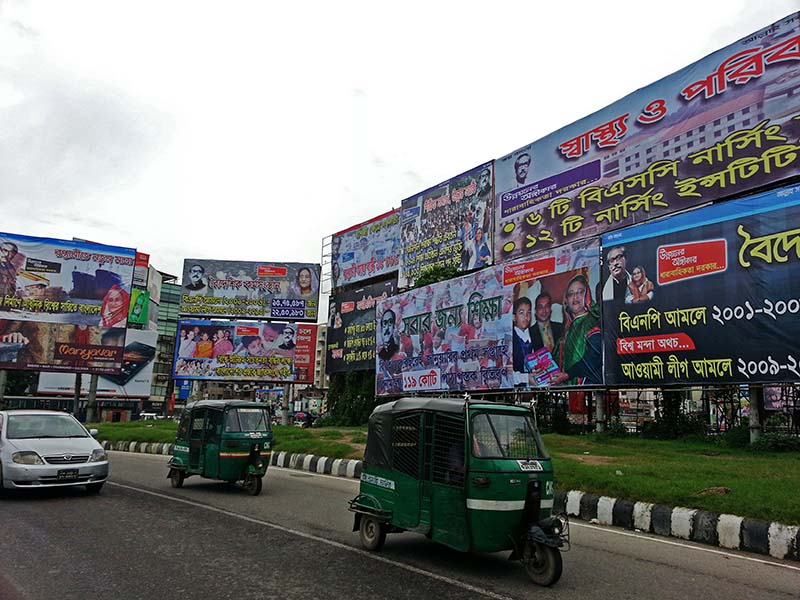
Continue reading “Government?s self-publicity with public money”
The New World Disorder

Tariq Ali, in this exclusive interview, seamlessly switches from contemporary historian to scholar-at-large to polemicist to raconteur, as he tackles many of the impinging issues of our times. By SASHI KUMAR, Frontline
He was in southern India after nearly 30 years. He had come to Kerala to deliver the Chinta Ravindran Memorial Lecture at Thrissur. My friend, the well-known writer Paul Zacharia and I were showing him the sights and we had just been to the site of the archaeological dig at Pattanam near Kodungalloor where he saw the unearthed pottery and artefacts that were reconstructing the fascinating story of an early society in these parts, already in maritime contact with West Asian ports and ancient Rome. From there we proceeded to the nearby Cheraman juma masjid, considered the first mosque in India, and perhaps the second in the world, dating back to A.D. 629. There was only a little evidence of that ancient patrimony left; the quaint old native structure had been all but pulled down some 50 years back and a more commodious, more standardised edifice built around it. All that was left were some pillars, a section of a doorway, another of a beamed ceiling and a crumbling staircase leading up to the attic, all in wood. But a photograph of the structure, as it was in 1905, hung on the wall. Continue reading “The New World Disorder”
Justice Still Elusive in Factory Disasters in Bangladesh
by Jim Yardley. The New York Times
DHAKA, Bangladesh ? Inside Courtroom 21, the two judges peered down from high wooden chairs as lawyers in formal black robes presented their motions. Activists and victims watched from the back. And a few steps away, a portly man with a thick black beard remained silent. He was the suspect. He did not seem especially nervous. Continue reading “Justice Still Elusive in Factory Disasters in Bangladesh”
Murder not tragedy
An exhibition of observations, both witnessed and imagined of the Rana Plaza collapse.
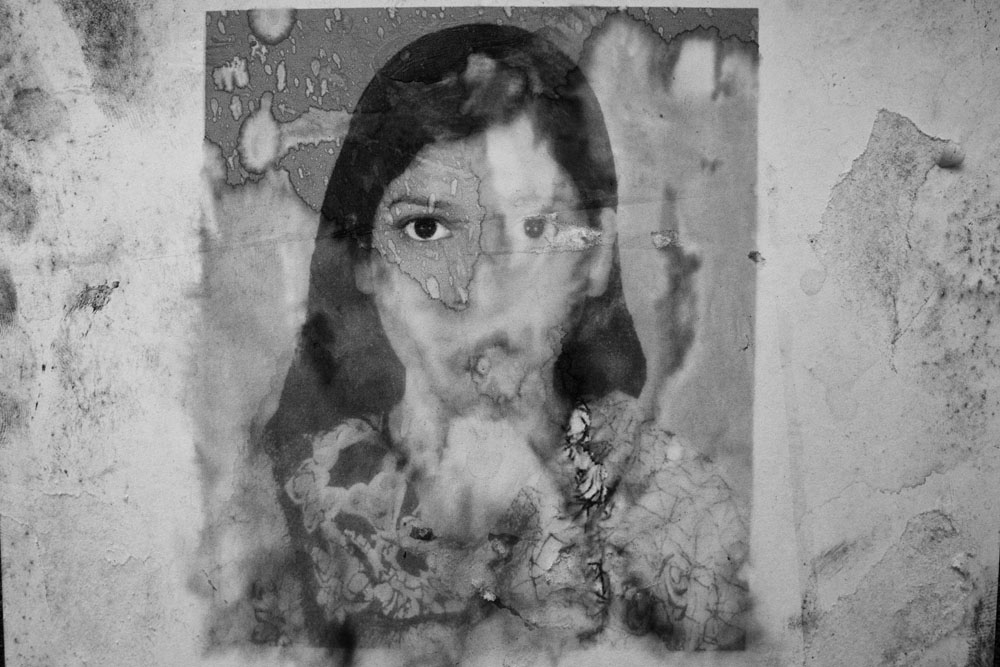
24th April, 2013. 1127 garment workers perished in the collapse of Rana Plaza in Savar. Excluding natural disasters this is the single largest cause of death, post-independence. Hundreds of workers have been injured. Hundreds still missing.
The rescue operation at Rana Plaza continued for 21 days. The loved ones of the victims held their vigil without respite, twenty four hours a day, scrambling from Odhor Chondro Park to Enam Clinic, to the morgue and back. As tiring bodies wore down, they slept in nearby coffins. It is of course a tragedy of enormous proportions, but by calling it a tragedy, we are shielding the guilt. Making it appear as if no one was to blame. That this is the destiny of the poor and the downtrodden. Is that how it was?
The history of the garment industry in Bangladesh is littered with incidents of fire and collapsed buildings. 27 workers were trampled to death in Sharaka Garments in 1990, while trying to flee a fire. There have been many deaths since, some through faulty construction, some due to the absence of fire exits. The fire in Lucas Garments took away 10 lives in 1995. 14 died in Suntex Garments in 1996. 22 in Rahman and Rahman Garments in 1997. Another 27 in Tamanna Garments the same year. We lost 53 in Chowdhury Knitwear Limited in 2000. It is a longer list including the recent fire in Tazreen Fashions, with Rana Plaza being the latest addition.
Drik had invited photographers, activists and other artists to submit work and register their protest. Their observations, recorded and imagined, form the basis of this exhibition. Murder, not tragedy. ??
The exhibition?“Tragedi Noi Hottakando”?will be opened at Drik Gallery tomorrow Friday, 31 May 2013 at 5 pm. The exhibition will continue till 5 June 2013. Please get your friends, family and clients to come and voice their support. This cannot, must not, go on.
Bangladesh?s Worst Industrial Accident: Scenes From a Terrifying Tragedy

Let me see the world just one more time
They said I would need a mask. ‘The smell’ they said. It was five days into the accident.
But it was no accident. A building built illegally, of faulty construction, showing signs of rupture, had been made their prison. It eventually became their grave. More money needed to be made.
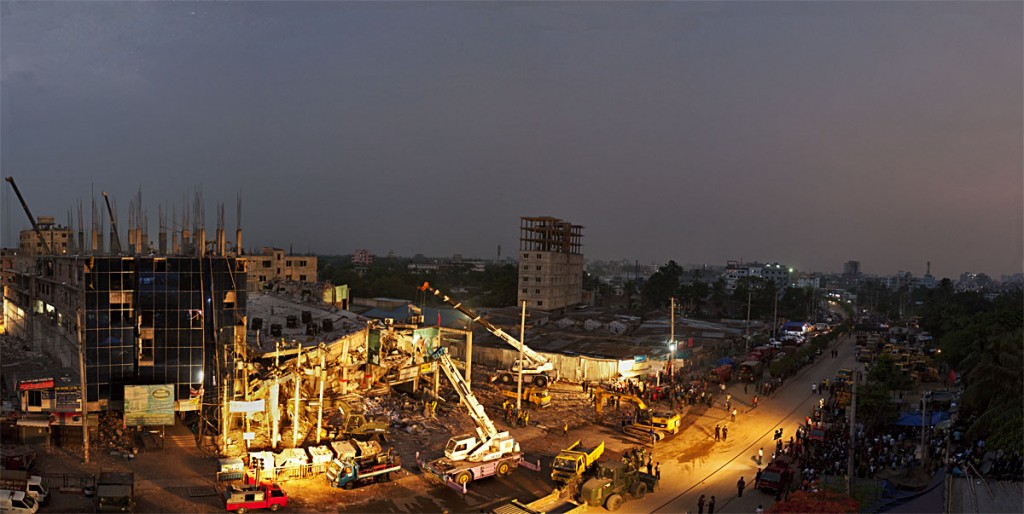
Inside Bangladesh's garment factories: life and work in a dangerous industry
By Homa Khalil The?Guardian.
Gazi Nafis Ahmed’s photographs of clothing factory workers in Bangladesh reveal some of the grinding poverty and ever-present dangers they face day after day. Nafis is an alumni of Pathshala South Asian Media Institute and in the VII Mentor Program
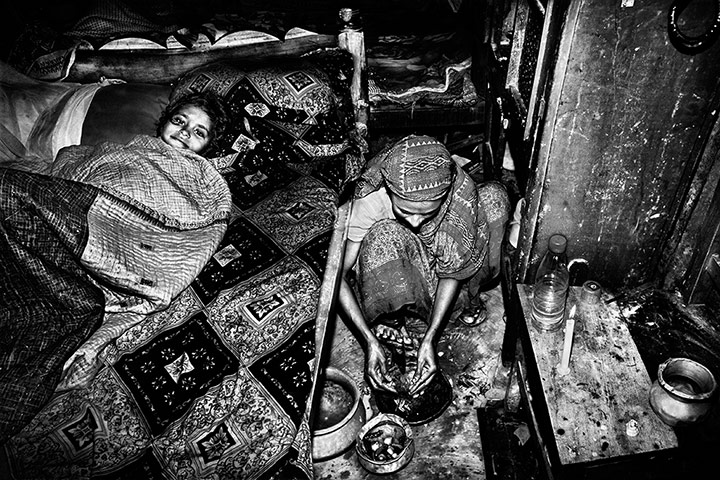
Continue reading “Inside Bangladesh's garment factories: life and work in a dangerous industry”
Bangladesh Needs Strong Unions, Not Outside Pressure
By Fazle Hasan Abed in New York Times
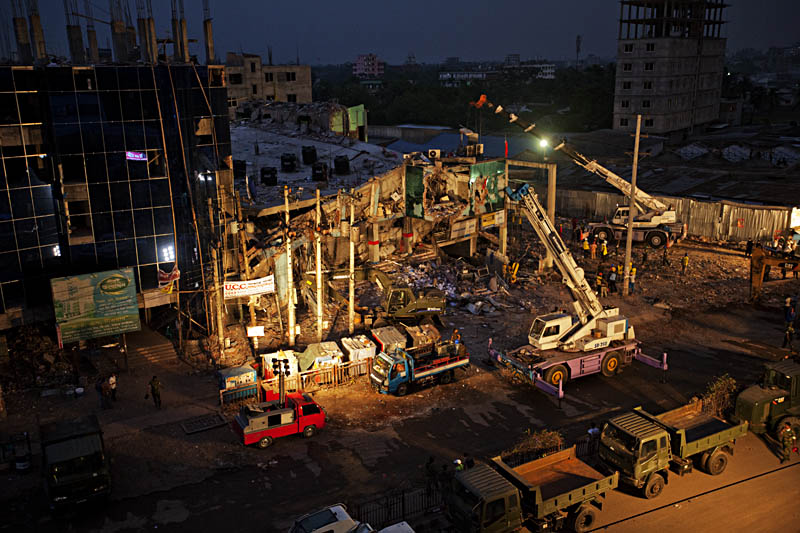
BANGLADESH, my country, is again in tears. Last week in Savar, a suburb of Dhaka, the capital, a poorly constructed building that housed garment factories and other businesses collapsed. More than 300 have been confirmed dead, and the final death toll could well exceed 700. Continue reading “Bangladesh Needs Strong Unions, Not Outside Pressure”
Rana Plaza: Globalising greed
(In Bangla)?Interview of rescue volunteer Mohammad Ferdous at Rana Plaza from Shahidul Alam on Vimeo.
(In Bangla) Volunteer rescue worker Mohammad Ferdous breaks down in tears as he recalls how he had to saw off a hand of a trapped worker in order to free her from the wreckage of Rana Plaza where around a thousand workers are still reported missing. Pity we still can’t use youtube as it is still banned in Bangladesh.

